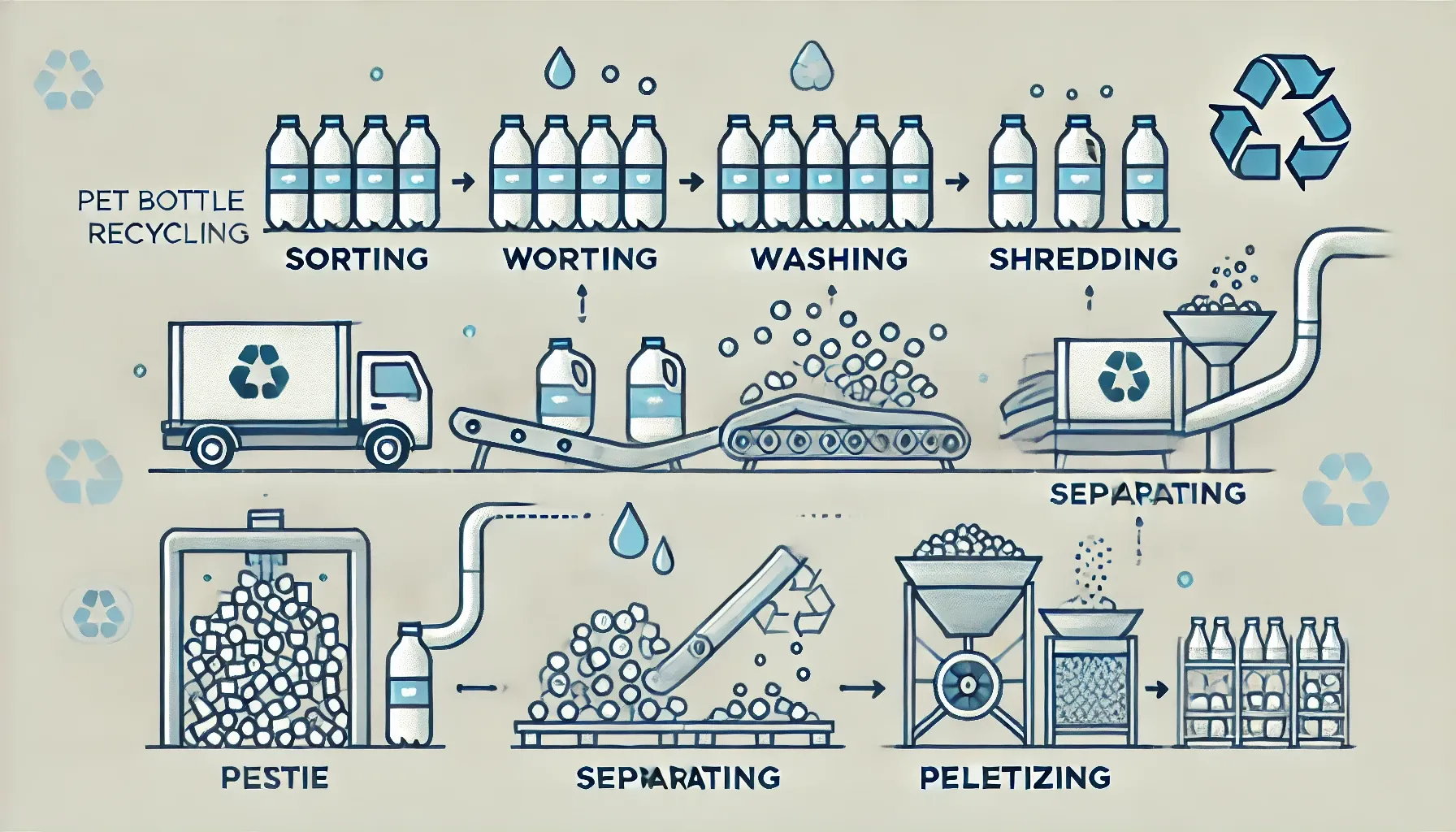Een PET-flessenrecyclingmachine is een gespecialiseerd apparaat dat ontworpen is om gebruikte polyethyleentereftalaat (PET)-flessen te verwerken tot herbruikbare materialen. Deze machines zijn van cruciaal belang in de recyclingindustrie, omdat ze helpen om gebruikte plastic flessen om te zetten in schone plastic vlokken of pellets van hoge kwaliteit die gebruikt kunnen worden om nieuwe producten te maken.
Inhoud
Step-by-Step Guide: How PET Bottle Recycling Machines Work
1. Collection and Sorting
The first step in the recycling process is the collection of used PET bottles from various sources, such as households, businesses, and recycling centers. Once collected, the bottles are transported to the recycling facility.
Sorting:
- Bottles are sorted based on color and material type.
- Manual or automated sorting systems are used to separate PET bottles from other types of plastics and contaminants.
2. Cleaning and Washing
After sorting, the bottles undergo a thorough cleaning process to remove any residues, labels, and adhesives. This step is essential to ensure the purity of the recycled material.
Waslijn:
- Bottles are fed into a washing line where they are washed with water and detergent.
- High-pressure water jets and mechanical scrubbers remove dirt, labels, and adhesives.
- The washed bottles are then dried to prepare them for the next stage.
3. Shredding and Crushing
The clean and dry bottles are then fed into a shredding machine, which cuts them into small pieces, known as flakes. This step is crucial for increasing the surface area of the material, making it easier to process further.
Shredding:
- Bottles are loaded into the shredder.
- Rotating blades cut the bottles into small, uniform flakes.
- The size of the flakes can be adjusted based on the requirements of the recycling process.
4. Separation
The shredded flakes undergo a separation process to remove any remaining contaminants, such as caps, rings, and labels. This step ensures that the final product is pure PET.
Separation Techniques:
- Air Separation: Lighter materials like labels are removed using air blowers.
- Water Separation: Density-based separation in water tanks removes heavier contaminants.
- Electrostatic Separation: Static electricity is used to separate materials based on their electrical properties.
5. Extrusion and Pelletizing
The clean PET flakes are then melted and extruded into long strands, which are cut into small, uniform pellets. These pellets are the final product of the recycling process and can be used to manufacture new plastic products.
Extrusion:
- PET flakes are heated in an extruder until they melt.
- The molten PET is forced through a die to create long strands.
- The strands are cooled and cut into pellets.
6. Quality Control and Packaging
The final step in the process is quality control, where the recycled PET pellets are tested for purity and quality. Once they pass inspection, the pellets are packaged and sold to manufacturers who use them to create new plastic products.
Quality Control:
- Pellets are tested for contaminants and consistency.
- Any substandard material is reprocessed.
- Approved pellets are packaged for distribution.
Conclusie
PET bottle recycling machines are an essential part of the plastic recycling industry, transforming waste bottles into valuable raw materials. By following a detailed process of sorting, cleaning, shredding, separating, and pelletizing, these machines help reduce plastic waste and promote a circular economy. Investing in PET bottle recycling technology not only benefits the environment but also creates economic opportunities in the recycling sector.


